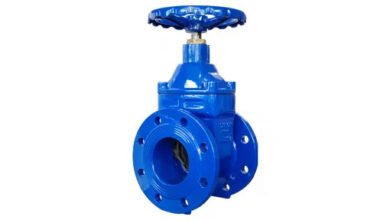
In the first place, it’s essential to recognize that the response to the question will be different for everyone. The Amazon FBA Warehouses have different limitations according to the type of account you have and how long you’ve been an Amazon seller, how quickly you change your products, and your overall rating.
In addition, your ideal is likely to look different based on the size and weight of your product, as well as the sales you are currently making and those that you anticipate in the near term.
The number of items that must send to Amazon will differ from account to account and also from season to season.
Understanding FBA Warehouse Limitations
Amazon sorts items into several categories in order to meet its warehouse limits. The category you choose is determined by the item.
- Apparel
- Aerosol
- Footwear
- Standard Size
- Oversize
- Flammable
For all of these categories, the most basic measurement used for FBA limits will be cubic feet.
If you are an individual Seller Account, the storage limit will be 10 cubic inches. The amount of merchandise you can send to Amazon is completely contingent upon the dimensions of the product. The larger the product you’re selling, the smaller the item you’ll be able to keep in your inventory.
If you are a professional Seller Account, the limit will begin at 25 cubic feet and differ based on a number of variables.
You might not need to face storage restrictions if:
- You’re a brand new seller or you’ve not obtained an IPI yet.
- You maintain consistently an incredibly high IPI (Inventory Performance Index)
You could have smaller than 25 cubic yards of space if your product falls under the categories of flammable or aerosol.
Although Amazon does not give us details on how they establish storage limits, it is generally determined by your amount of sales as well as the IPI number and your fulfillment center’s capacity. The more you sell, and also the greater your IPI and the greater storage you will get.
What Is The IPI?
Amazon makes use of Amazon’s IPI (Inventory Performance Index) to evaluate stores on how well the management of their stocks is. The score is calculated on an index ranging from zero to 1,000. The first sellers don’t have an IPI and typically receive an IPI within the first 15 days of FBA having received their first item.
Amazon makes use of this in order to reward those who keep their inventory in order. Space is money, so the faster you can get your item off their shelves the more you will benefit.
You could earn an incentive fee or fulfillment fee if you keep your inventory in a timely manner. Businesses that leave items in warehouses may be able to see a decrease in their IPI.
We don’t have access to the exact calculation Amazon employs to arrive at the number. However, if you want to get this ranking to rise it is necessary to concentrate on these three areas.
- Growing your sales
- Designing high-converting, marketable listings
- Beware of excessive inventory at all costs
You can view you’re IPI within Your Seller Central Account as well as suggestions for improvement and what you’re doing correctly.
In 2021, generally speaking, you will not be subject to storage limitations when your IPI exceeds 500. This number increased to 500 in the course of the outbreak, which leads us to our next topic.
Special Circumstances Change Things
Before the unprecedented event of 2020 were no limitations regarding FBA seller inventory. The e-commerce market has seen a surge in the last two years more than was anticipated. Moreover, storage for inventory is highly sought-after.
Already the limits on storage and inventory increase during the Christmas season. While fulfillment costs aren’t prohibitive for banks, Amazon charges more for storage during the holidays, when nearly every seller experiences the highest volume of traffic.
It is essential to keep an awareness that the rules may be changed at any moment when things change and you must remain up-to-date.
Always check your FBA as well as the IPI section of your Seller Central Account to make sure you understand the limits you have at any point in time.
Stock Up, But Don’t Overstock
The most popular items will not last for a long time. If your product isn’t selling out of the store this year doesn’t mean it’s going to be on the shelves in the coming year.
To ensure that you don’t purchase inventory and don’t sell FBA fulfillment charges or monthly storage costs for inventory you must review the inventory quantity each month.
Ideally, you’ll need at least one month’s worth of inventory in your warehouse at all times, to ensure that you do not have to run out of products. But, preparing yourself for 4 or 6 or even more months in advance could cause more harm than good.
A large portion of the calculations you make to calculate Amazon FBA fees or a monthly storage charge is based on what you’re selling each month, and the speed of your sales growing steadily. Together with the warehouse’s limitations, These numbers are crucial to deciding the number of units you’ll have to keep in your inventory.
Take SellerApp’s Amazon FBA calculator help to calculate your fba fees.
Monitoring Your FBA Storage Limits
The good thing is that Amazon makes it simple to determine the extent to which you’ve used up your storage space.
Each month Amazon reviews sellers every month. If your account is subject to storage limitations, you’ll be notified on your account along with an update of the percentage of these limits you’ve already utilized.
Calculating Your Ideal FBA Inventory
The number of products you are able to send to Amazon is different for each person. You must know the storage limitations you must follow (if you have any) and how big your fulfillment facility is, along with your sales estimates which we have discussed previously. The type of product you offer and the size it is also going to impact this figure.
In general, this formula will give you a great start However, be aware that this doesn’t work for all. The above factors are to be considered in order to determine your final inventory numbers.
Last Month’s Sales in units divided by the average of the last 3 Months’ Growth in Sales = How much product you Should have in your storage every month
For instance, if the month you’ve sold 50 items and over the last 3 months, you’ve experienced at least 10 percent growth in sales per month Your formula for determining what amount to ship to the Amazon fulfillment center for this month could include…
50 x 1.1 = 55. Once you’ve got the number you want, it doesn’t be harmful to increase the number by a few, therefore let’s take 60 to keep it safe.
There are times when sales slow down, and you’ll have to reduce the number of items you sell to Amazon in order to prevent negatively impacting your IPI.
Conclusion
There is no method to figure out how many products you must send to FBA fulfillment centers.
You must be aware of the limitations Amazon puts on your online store, including the shipping costs as well as referral fees, the capacity of the warehouses currently as well as your own sales forecasts. Being aware of these three factors will allow you to keep your inventory at the correct amount.
Recommended Guide: How do I add keywords to Amazon PPC Campaigns?




